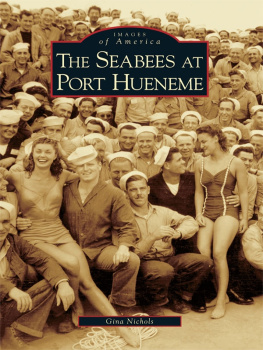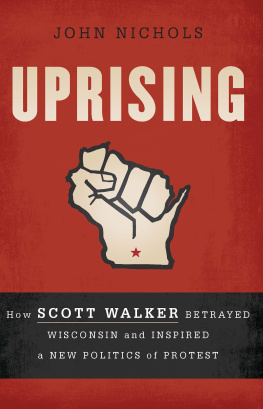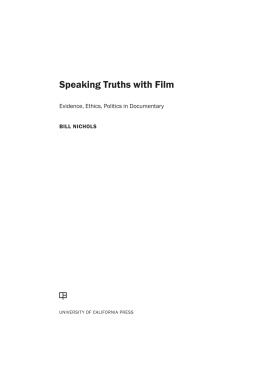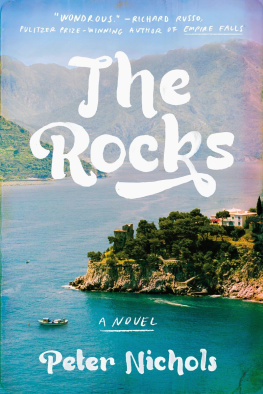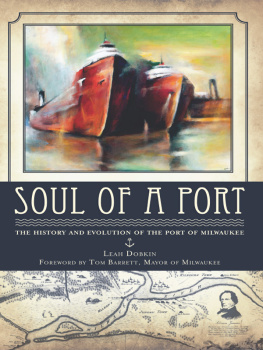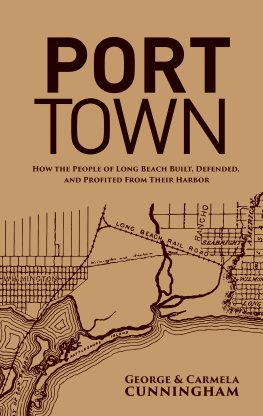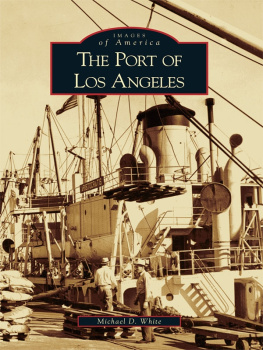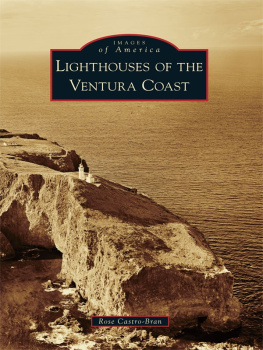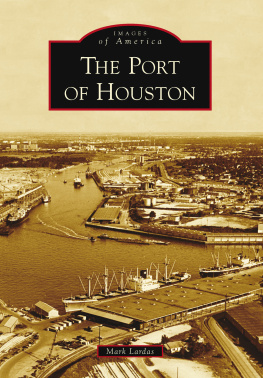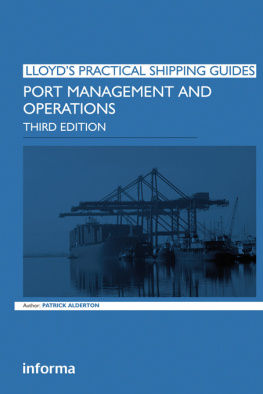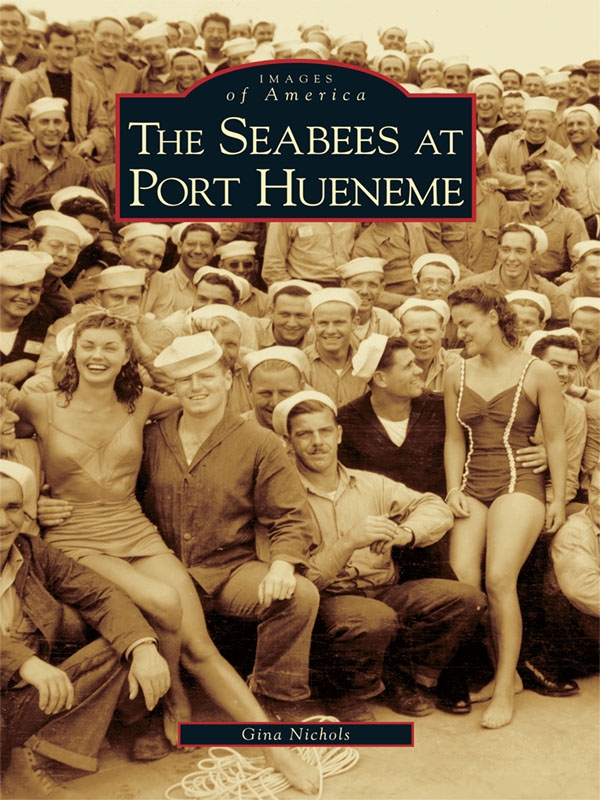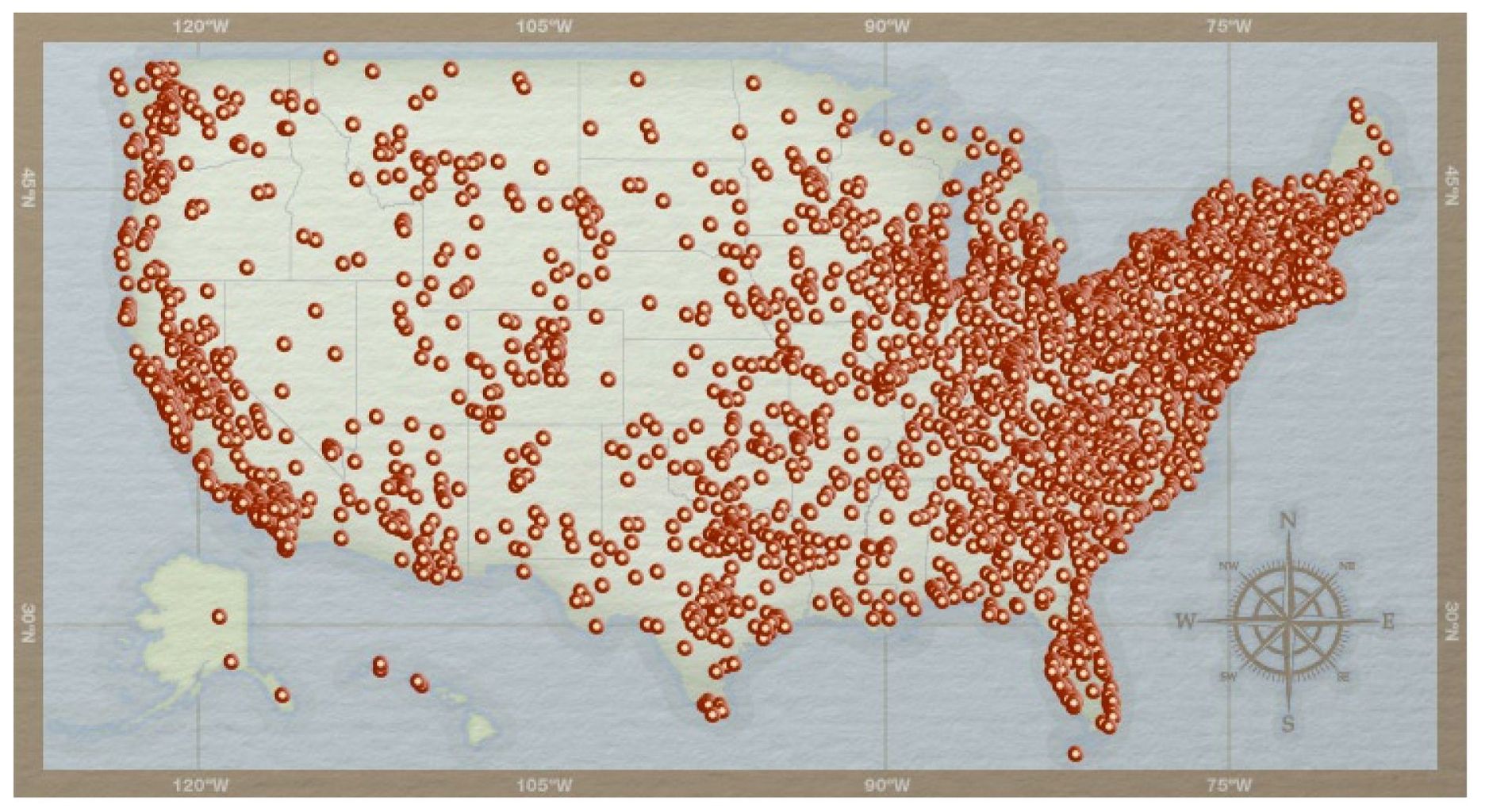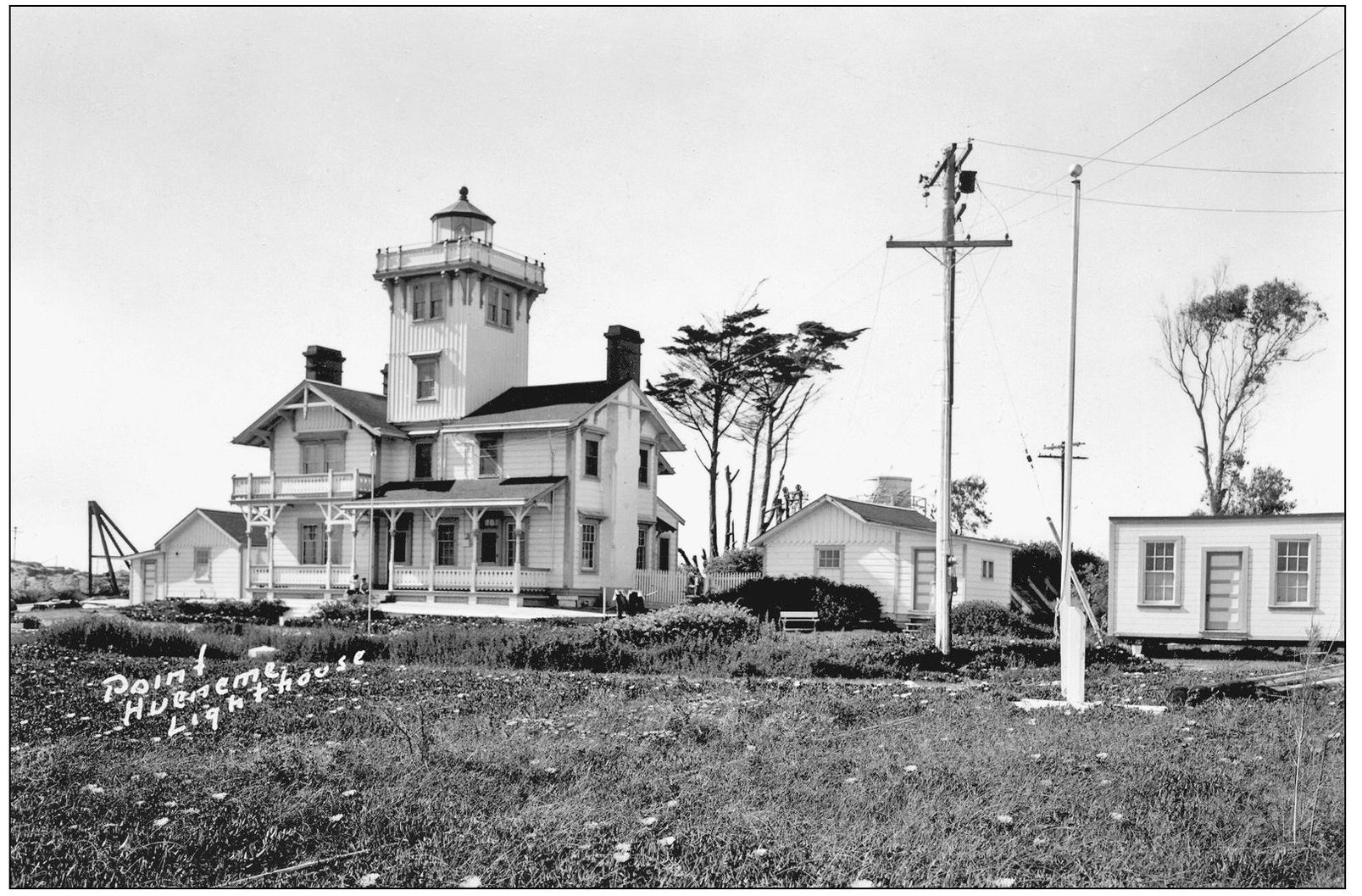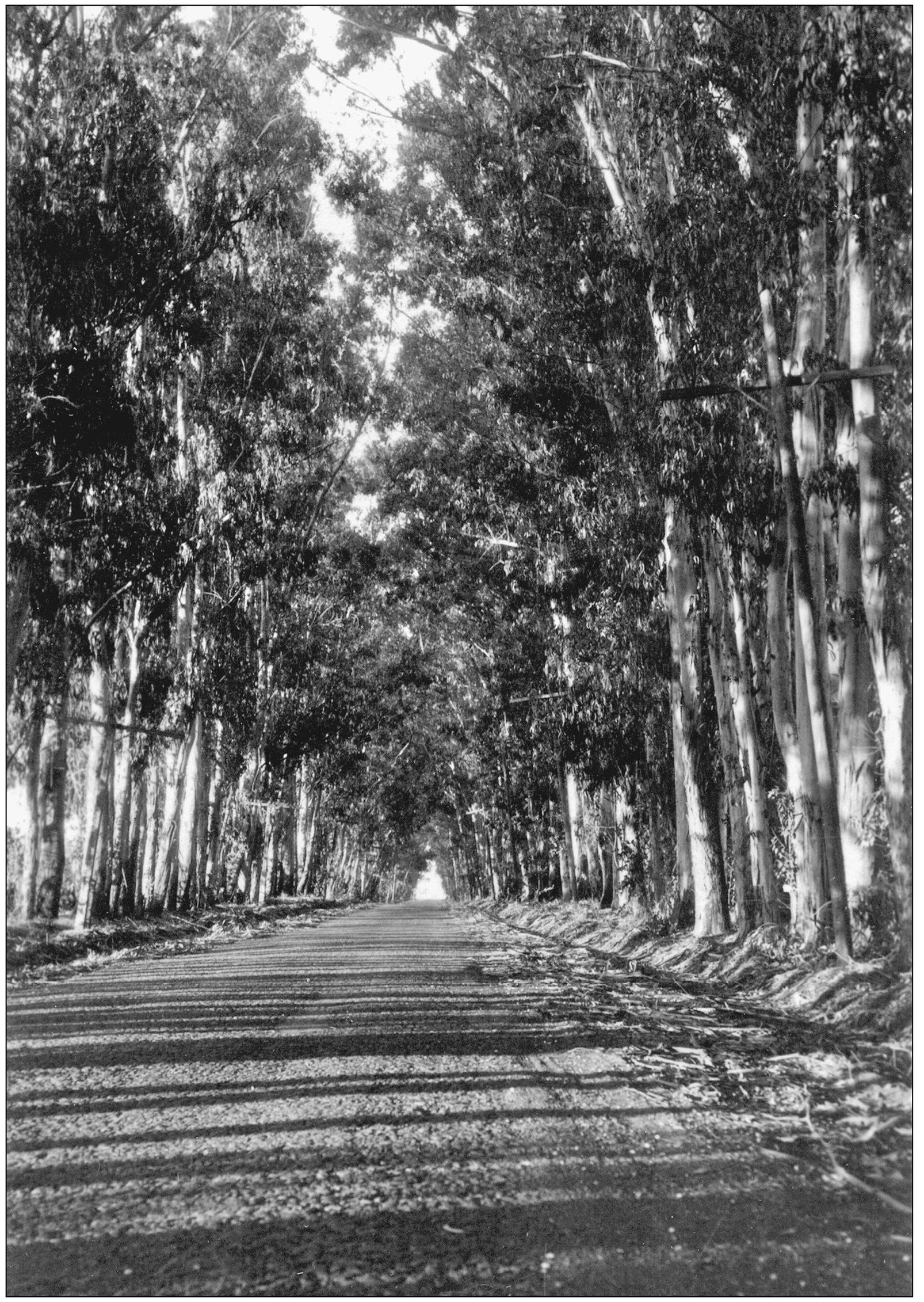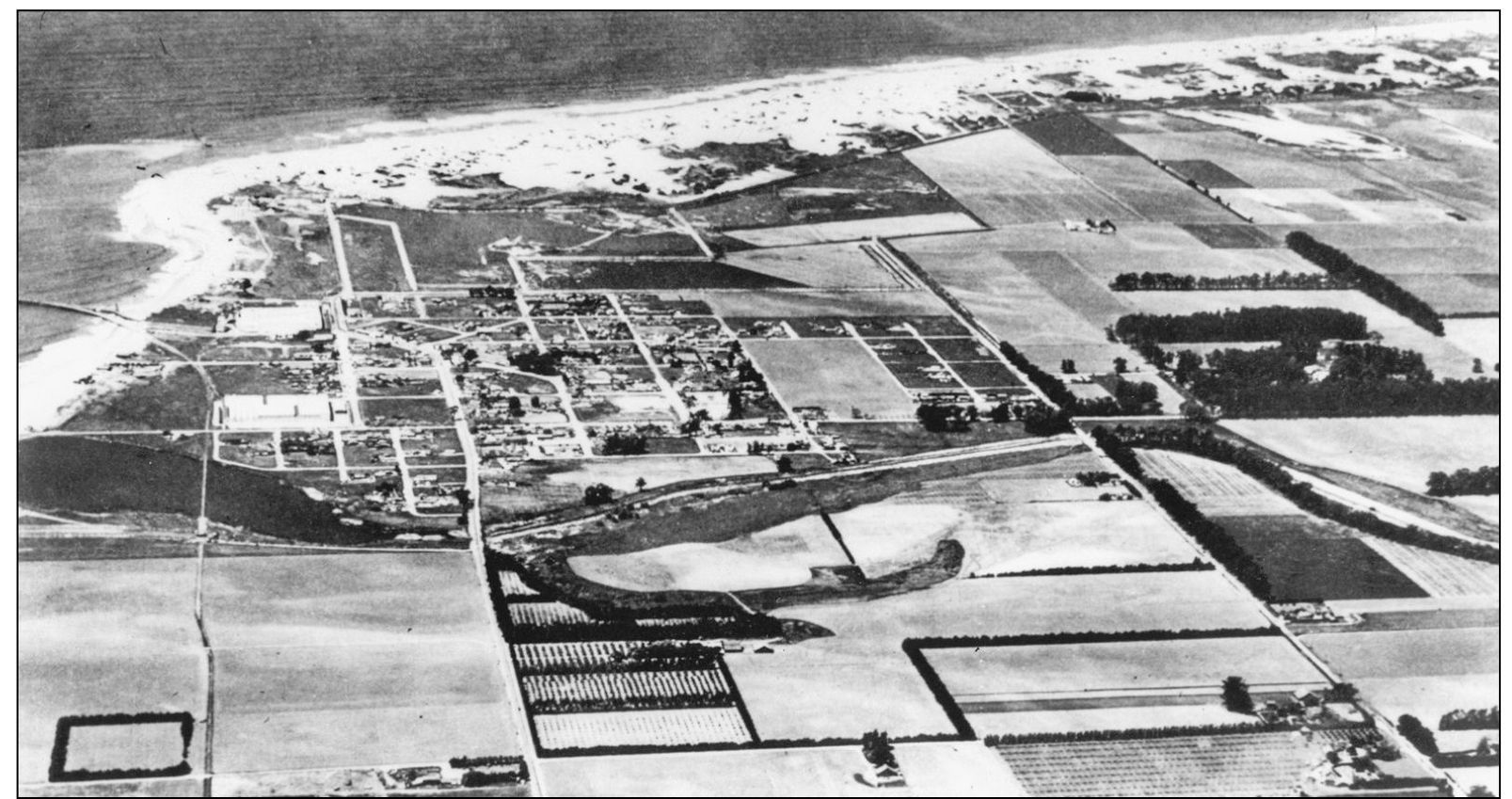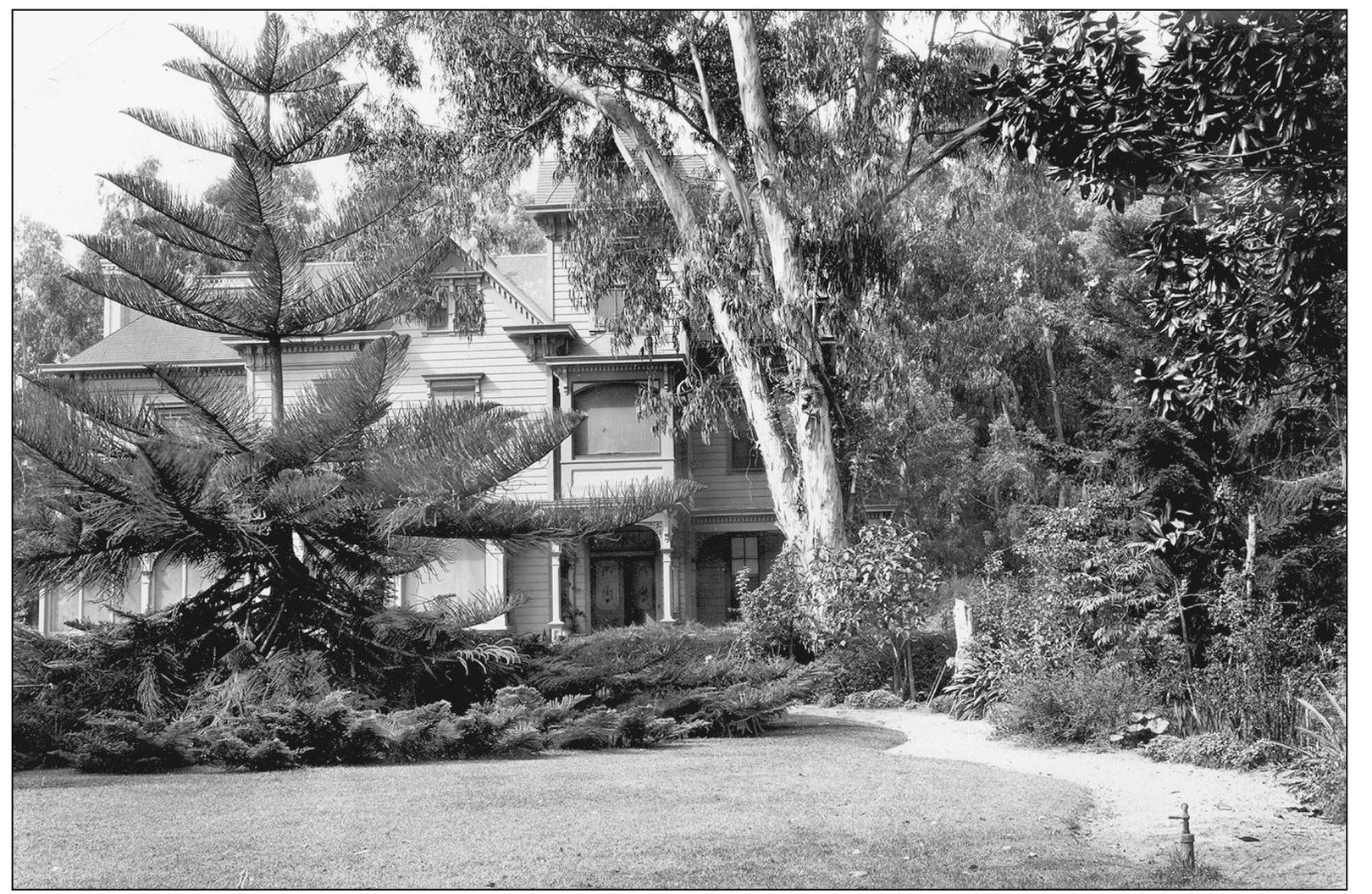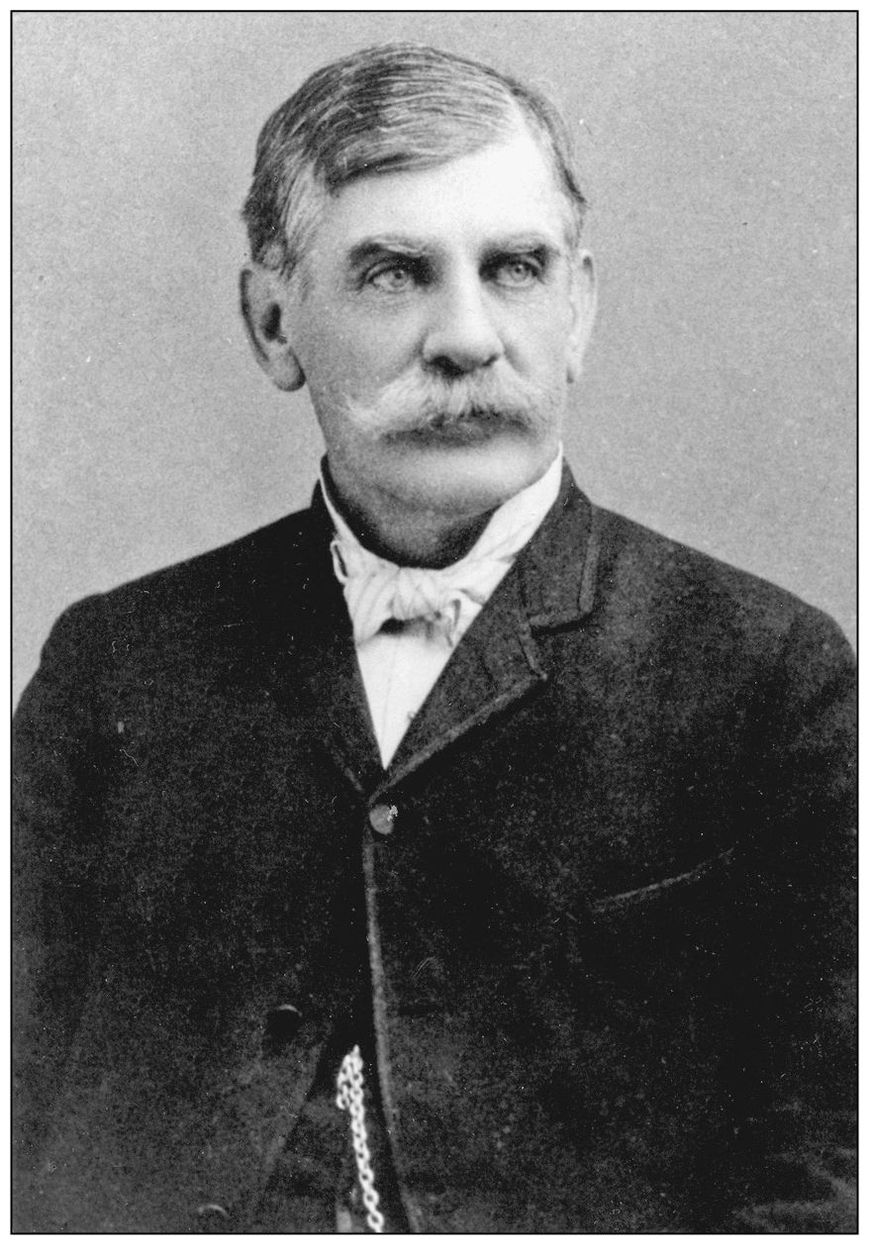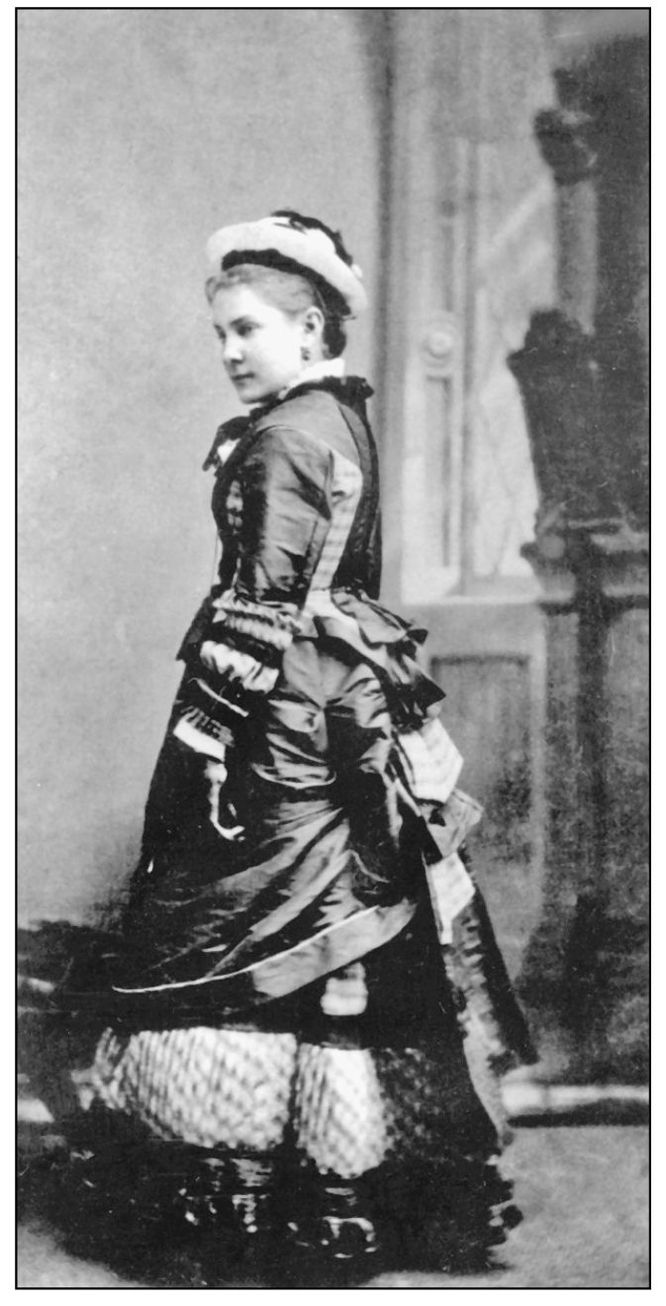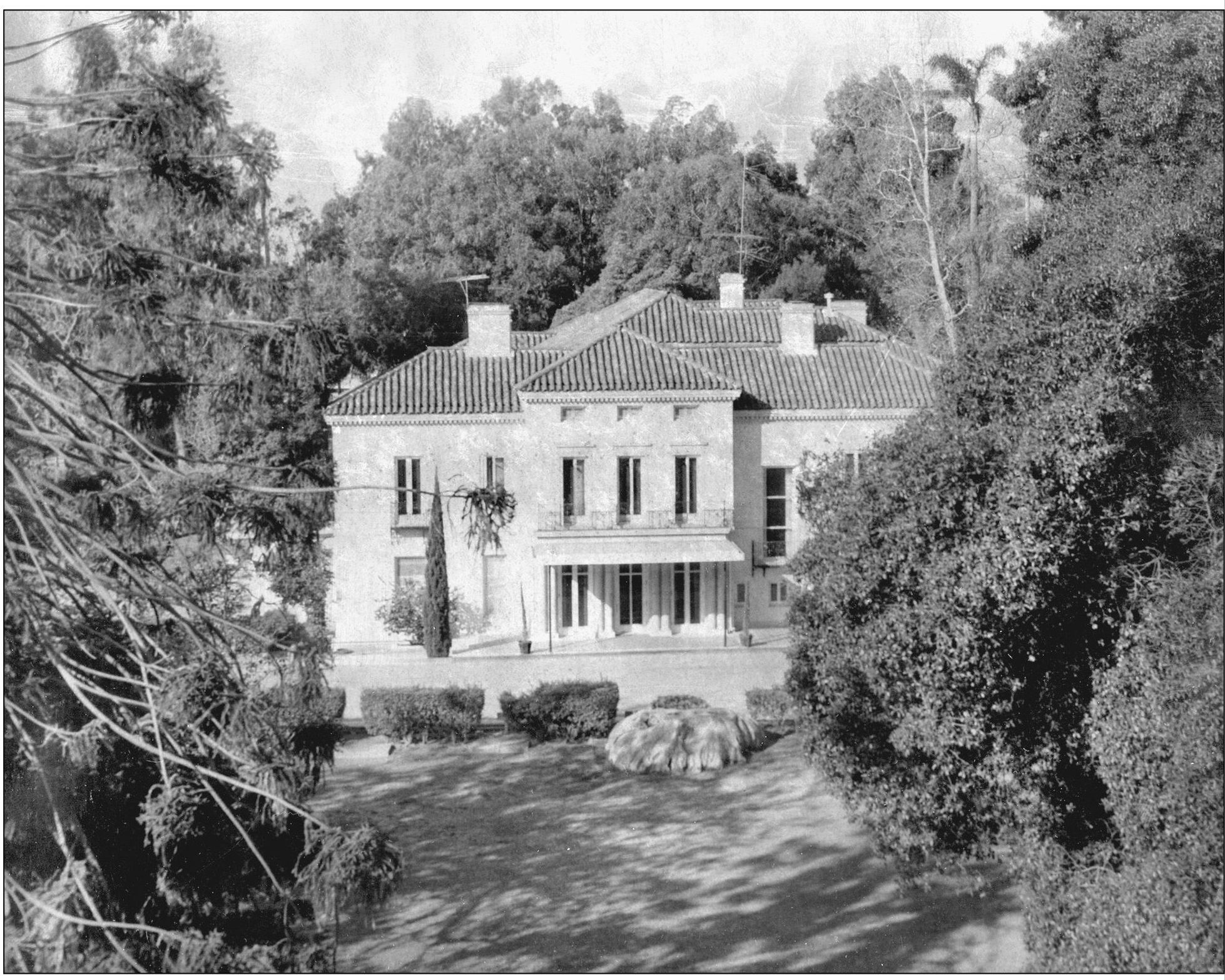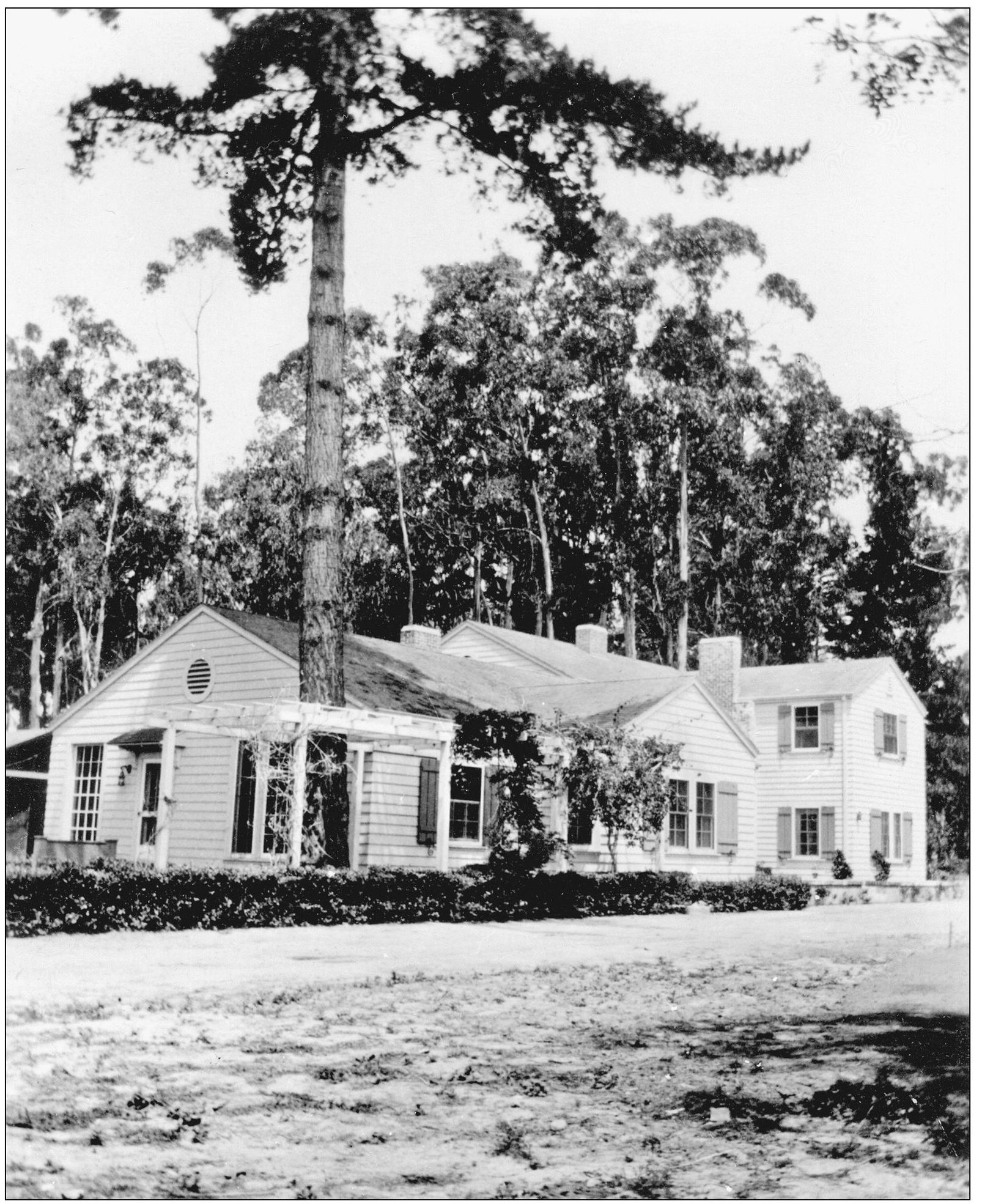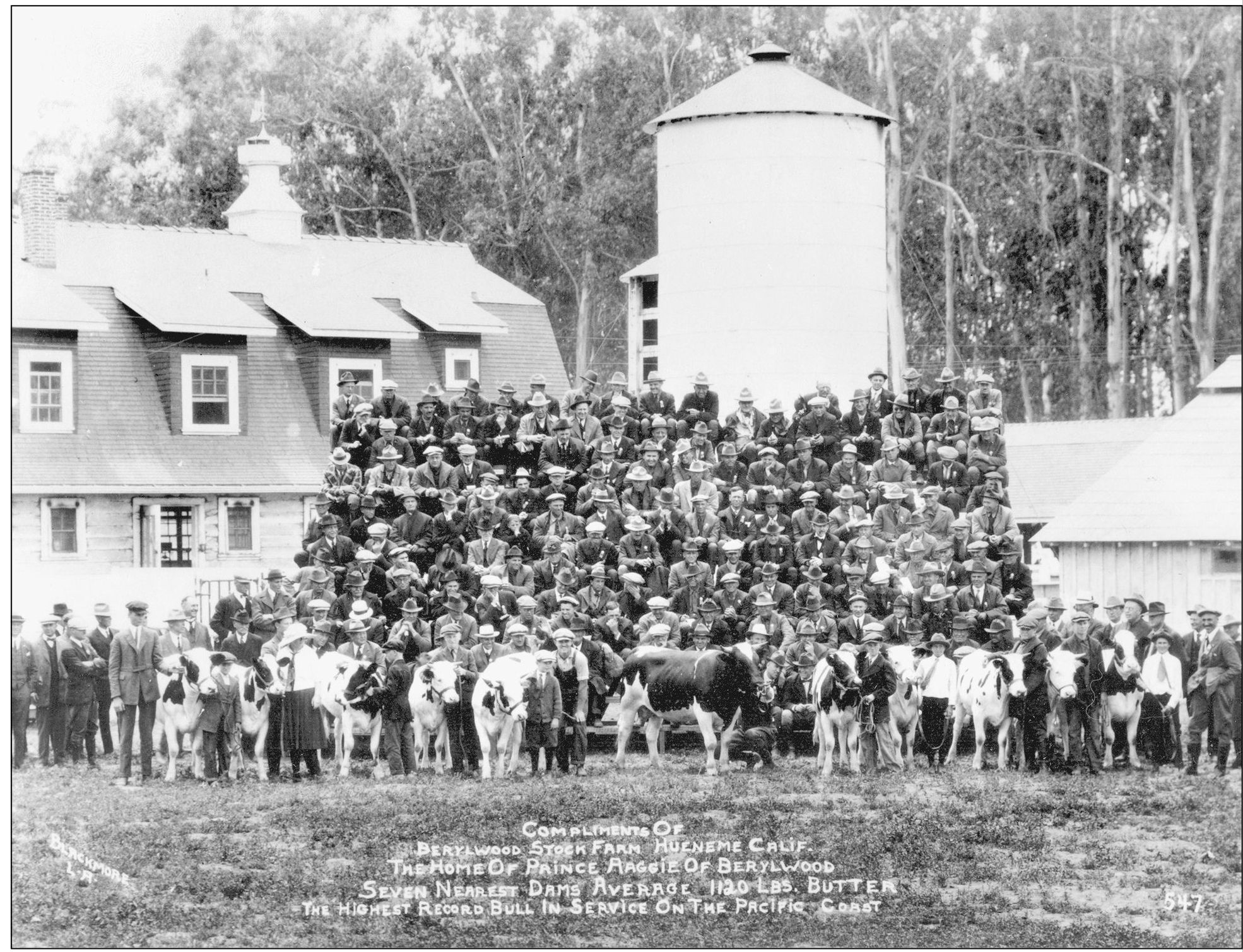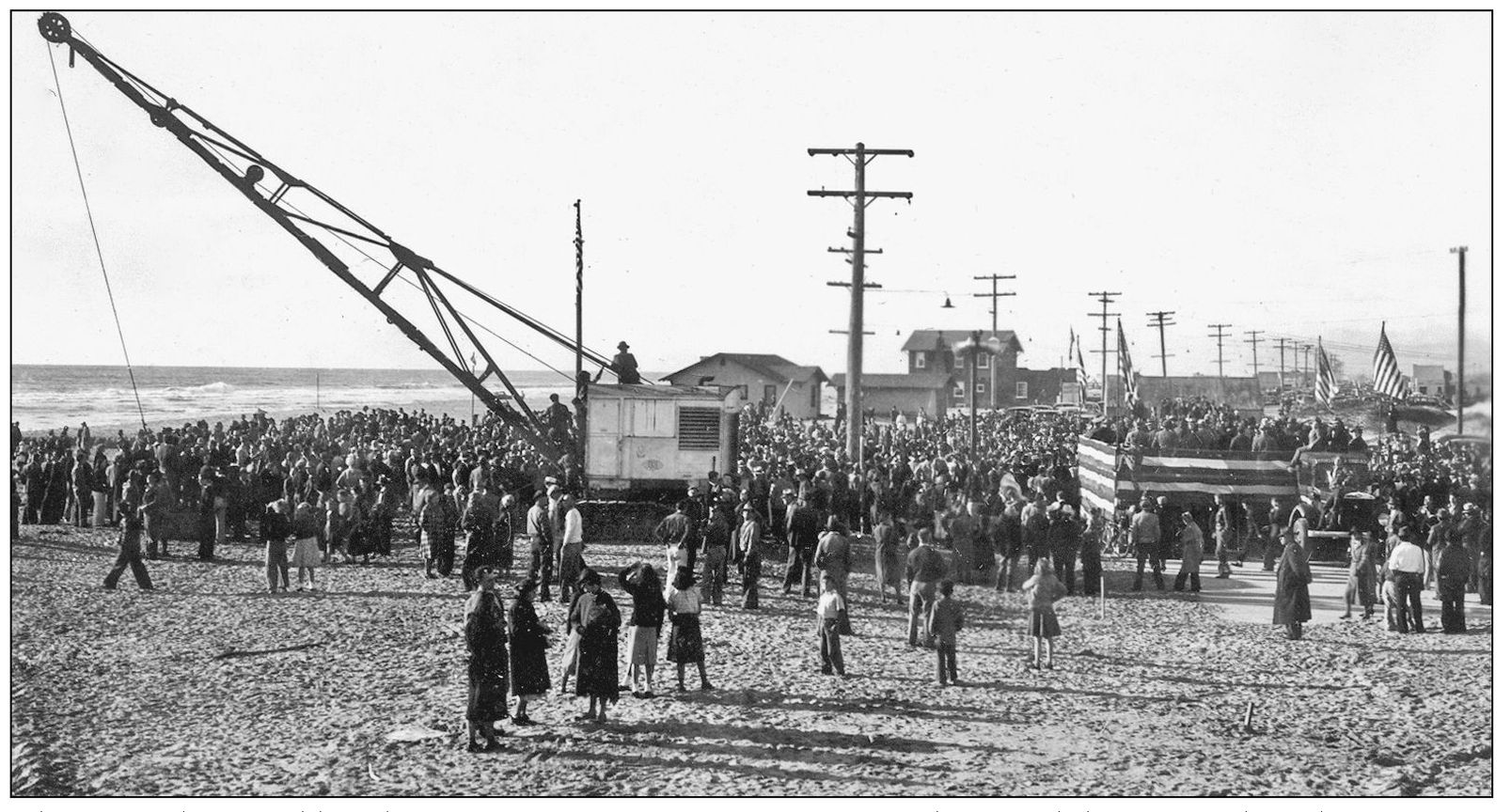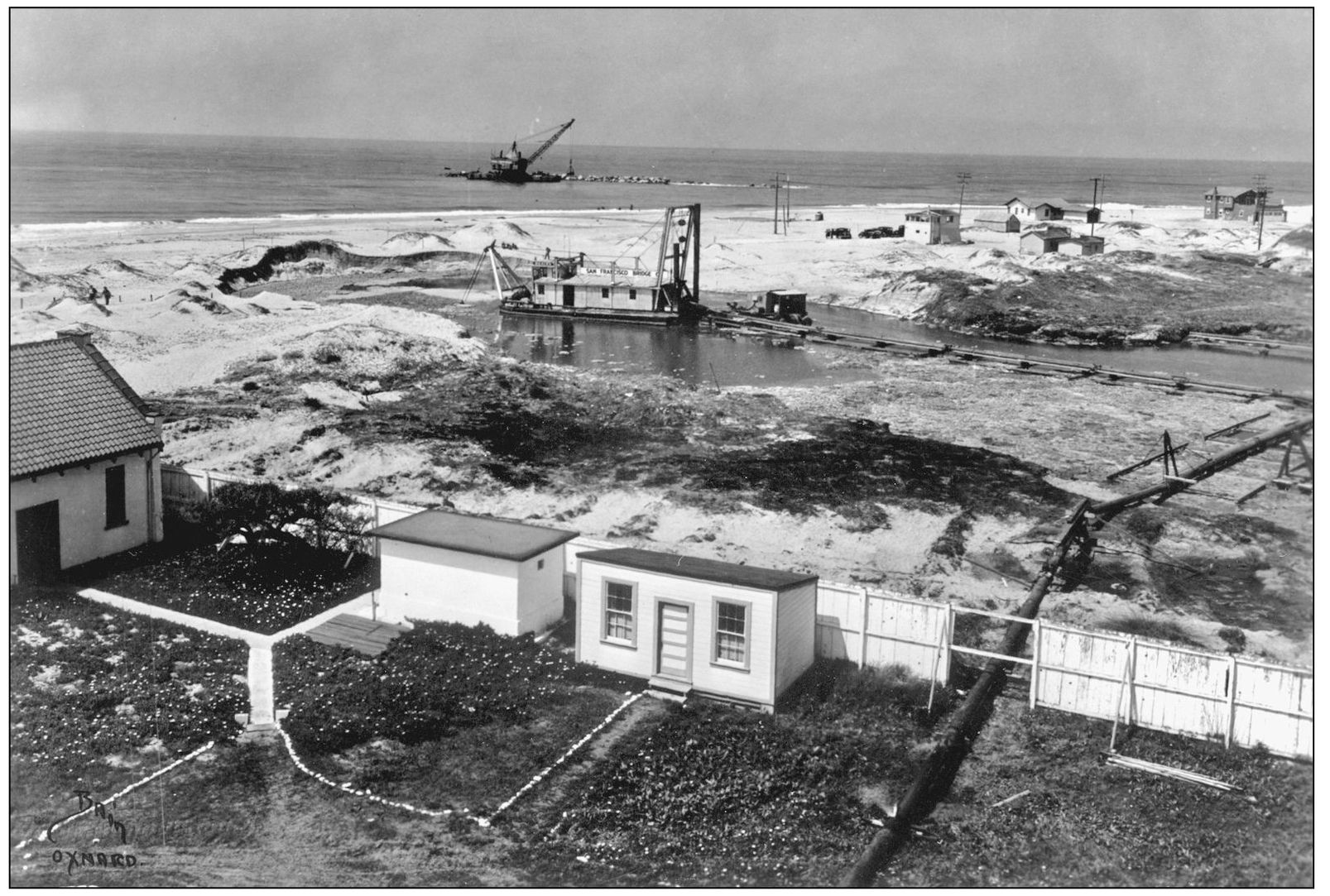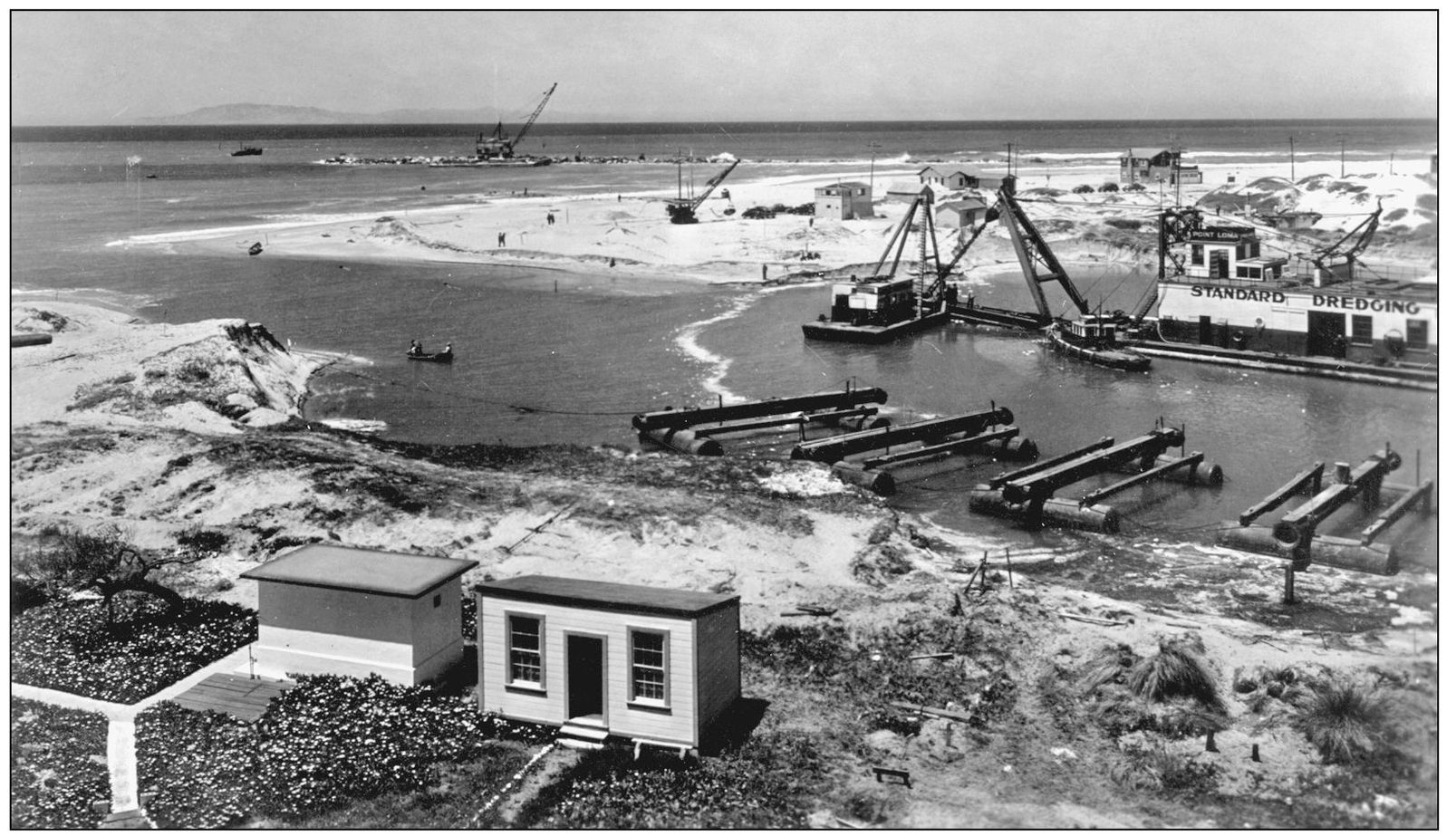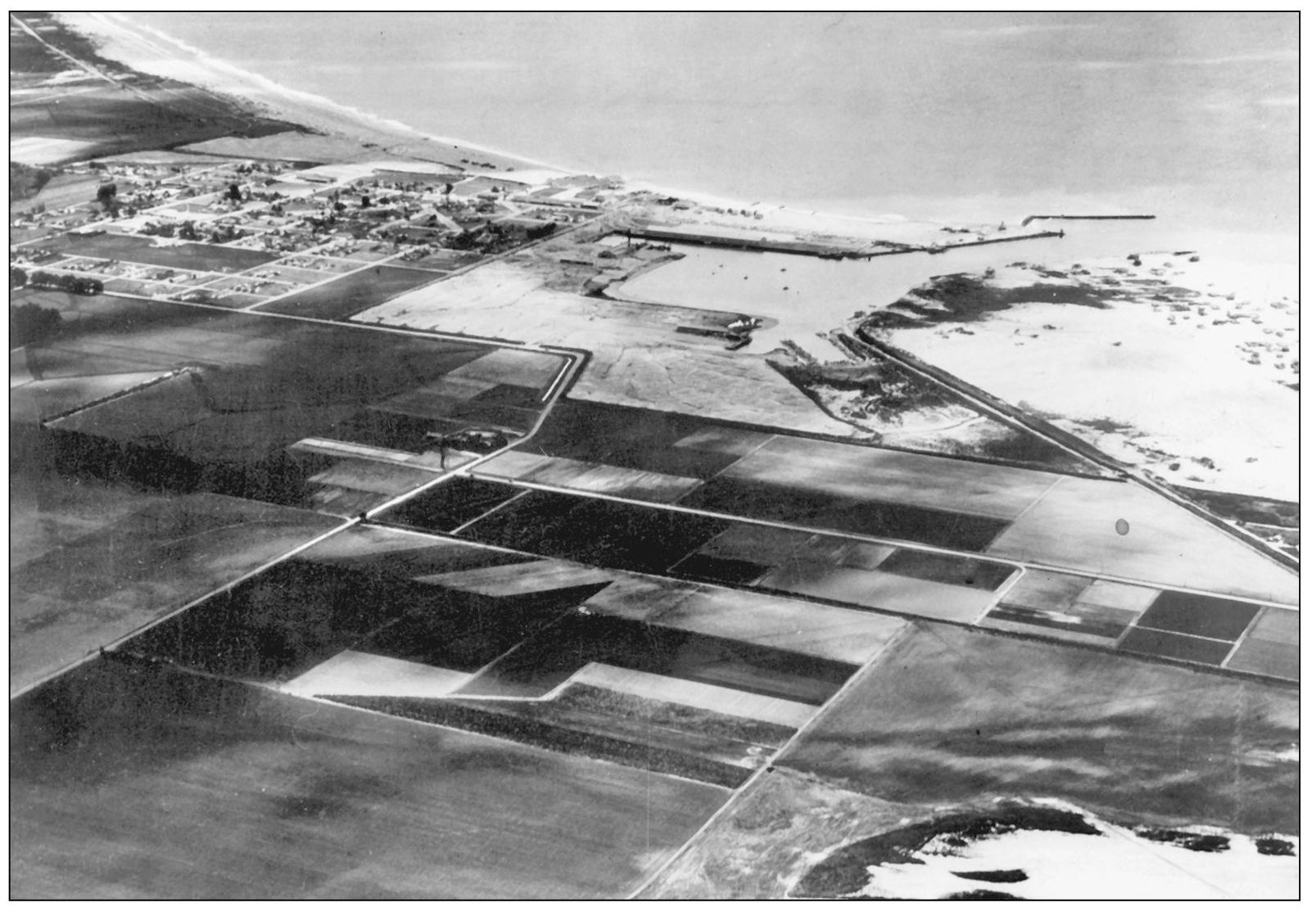One
THE EARLY YEARS 18751942
Congress allocated $22,000 on March 3, 1873, for a lighthouse to mark Point Hueneme. Pictured here in 1937, the Point Hueneme Lighthouse, built in a Craftsman style with a Swiss and Elizabethan influence, consisted of a two-story residence, with a square tower extending an additional story above the dwellings pitched roof.
Ventura Road (outside Berylwood on the Bard estate) is still dirt and shaded with the hundreds of original eucalyptus trees Thomas Bard had shipped from Australia. This photograph dates to the 1890s.
This aerial image of Point Hueneme shows the farms on the Oxnard Plain before the harbor was constructed in 1939.
The original Bard family home at Berylwood is pictured here prior to 1911, when it was torn down to construct Bard Mansion. The first floor of the Victorian building was built in 1878, and the upper two floors were finished in 1890.
In the 1890s, when this photograph was taken, Thomas Bard was president of Union Oil Company. Large deposits of petroleum were discovered in Ventura County and developed commercially under the Union Oil Company. Bard later served as a U.S. senator from 1900 to 1905. He purchased the land in 1871, developed an interest in horticulture and silviculture, and was personally responsible for the extensive collection of trees on the grounds of Berylwood.
Mollie Bard poses for a c. 1885 photograph in the family home. Mary Beatrice (Mollie) Gerberding married Thomas Bard in San Francisco in 1876. They had eight childrenfour sons and four daughtersand raised them in Ojai and Port Hueneme.
Berylwood, locally known as Bard Mansion, was completed in 1912 and was the third residence of Senator Bard and his family, pictured here c. 1920. The house remained in use from 1912 until Mollie passed away in 1937. The home remained vacant until the Navy occupied the land in 1942.
The Richard Bard House was built in 1910 as a one-story cottage and enlarged to two stories in 1926. Thomas Bard and his family lived here during the 19111912 construction of Bard Mansion. Richard Bard and his new bride, Joan, moved in after their marriage. Now known as Quarters A, the home has housed the commanding officer of CBC Port Hueneme and his family since World War II.
The Berylwood Stock Farm and staff are pictured outside the dairy in 1921. The stock farm was home to Prince Aaggie, Bards prize bull with the highest record of service on the Pacific Coast.
The official ground-breaking ceremony for Port Hueneme Wharf and the Oxnard Harbor District was held on February 4, 1939, with Judge Blackstock as guest speaker and Oxnard attorney Mark Durley serving as master of ceremonies. Richard Bard, destined to be known as the Father of Port Hueneme, was asked to turn the first shovel.
On January 24, 1939, the San Francisco Bridge Company began operations in the channel to dig out the Hueneme wharf. The idea for building a port was the direct result of a coastal exploration by Thomas Bard in 1867. Bard had learned of a strong offshore underground aquifer flow of fresh water that created a deepwater trough called Hueneme Canyon. The canyon came within 300 feet of the proposed channel, saving millions on dredging costs and keeping the channel free from sediment.
By May 1939, the Standard Dredging Company broke through the sand dunes and deposits of sediment that lay between the harbor and open sea. In 1938, local farmers created the Oxnard Harbor District with a bond issue of $1.75 million, started dredging, and built a transit shed and a wharf. The harbor officially completed construction by July 4, 1940, but the opening ceremonies were not held until July 5 and 6.

